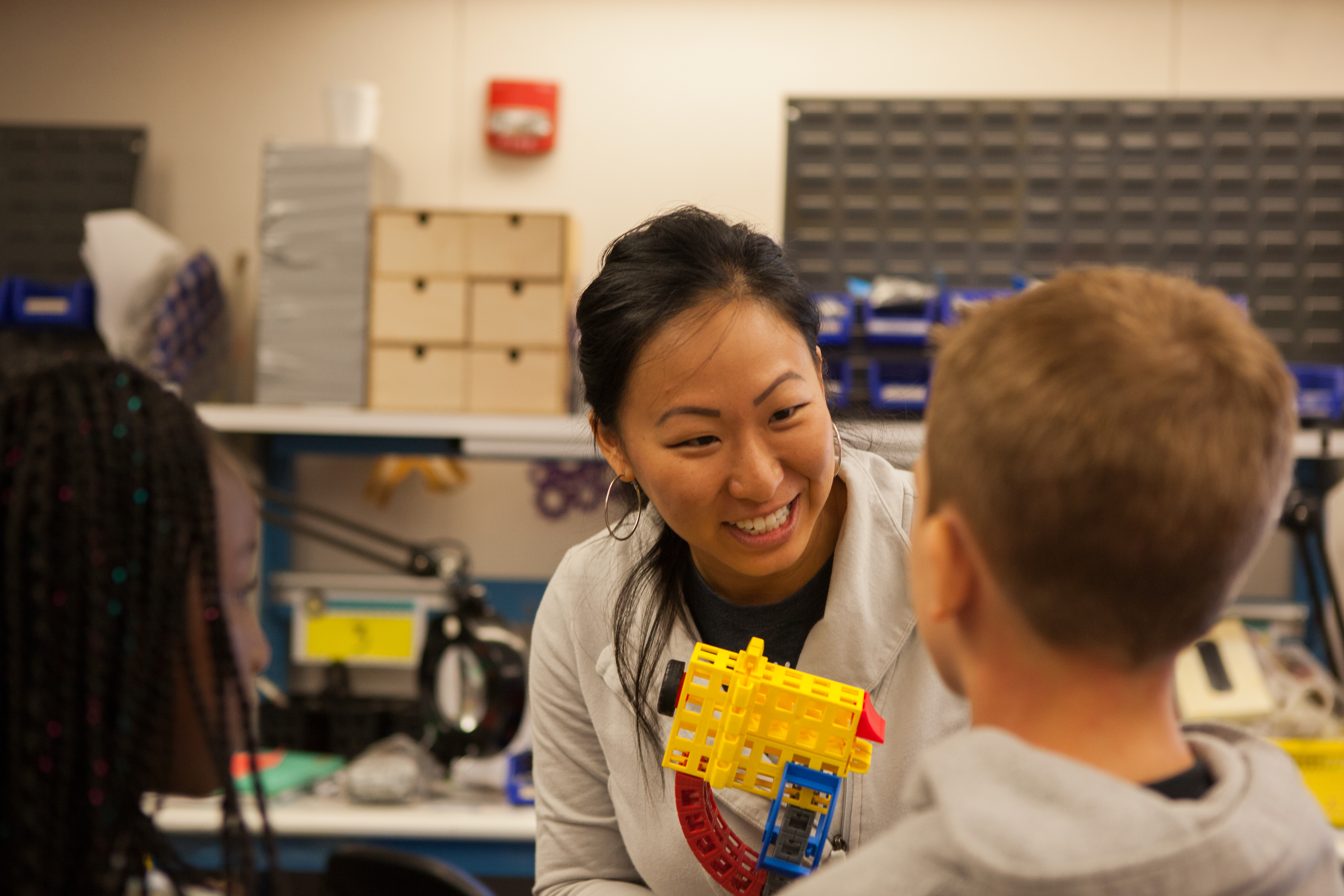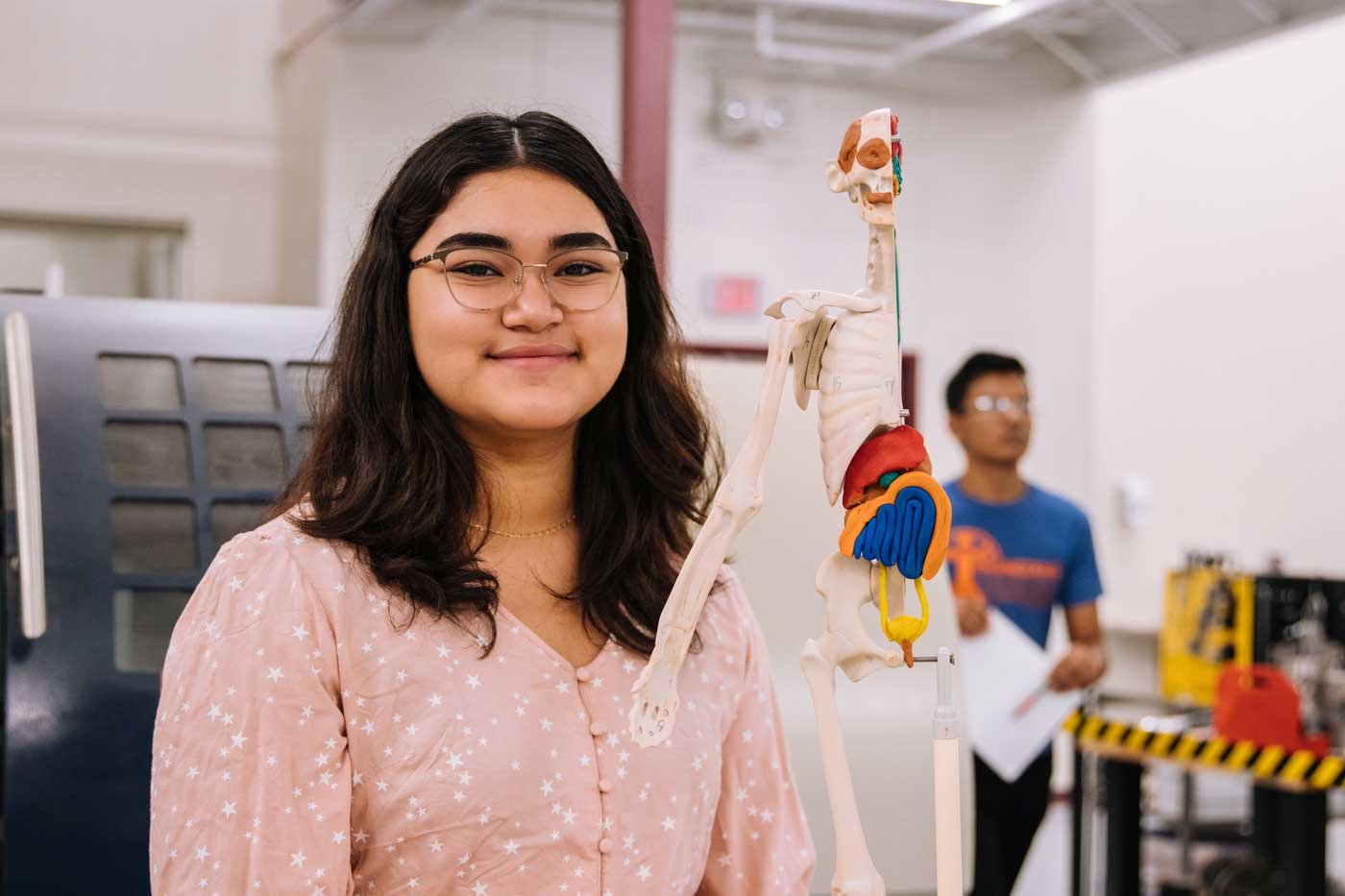
According to a 2020 study sponsored by Code.org, fewer than half of US schools offer a computer science curriculum. With students facing a more technological future, getting STEM training throughout their educational journey is more important than ever. That’s why, at Kid Spark Education, we’re passionate about providing our Middle School STEM program to help students develop important critical thinking skills. In our 6th - 8th Grade STEM Program, students explore challenging STEM concepts from their everyday world, authoring with technology to solve problems and create new solutions. By providing hands-on engineering and computer science education,our STEM labs give students a strategic gateway for students to learn disciplines and develop a strong STEM identity. When children can construct their sense of math and science with relatable projects, when they learn through their mistakes and succeed through persistence, they develop a growth mindset towards STEM.
Of course, when thinking about the STEM curriculum in your classroom, it’s important to consider what the particular lesson plans are and what type of skills you’re helping your svtudents learn. With that in mind, we’ve created an overview of our Middle School STEM program to give educators a snapshot of our STEM Pathways Lab.
Foundations of Design and Engineering
Starting with Kid Spark Basics, students can learn the basics of how to use Kid Spark resources in the classroom. Students will get hands-on experience with engineering concepts as they explore different building materials and processes that are used throughout Kid Spark learning experiences. From understanding how basic building components can be used to build strong structures to learning how articulating components can be used to create movement, to understanding the design and engineering process— students can start to learn how these components can be used to solve problems.

Working with the STEM Pathways Lab can help your students start to think like designers and engineers, which they can use in a variety of disciplines. As Tamecia Jones, assistant professor of STEM education at the NC State College of Education explains in this feature on the College of Education Website,
“At the heart of engineering is problem-solving. Even if a student doesn’t become an engineer, they will still have some type of problem to solve. The skills they learn in engineering courses teaches them habits of mind they can use for the rest of their life”.
Providing students this education during their transitional time in middle school will give them the tools to succeed in wherever they end up solving problems.
Simple and Compound Machines
By looking at shapes like inclined planes, wedges, levers, wheels, pulleys, and more, middle school students can use the STEM Pathways Lab to develop a conceptual understanding of how simple machines work and how they can be used to improve our lives. This can help them identify the simple machines that already exist in their lives and think about how the world around them functions and how improvements can be made.
Students then move onto compound machines, where they will explore how mechanisms and machines can be used to create and convert motion, increase speed, increase torque, and create mechanical advantage. This will give them an understanding of how more complex engineering processes work in the real world and build critical thinking skills around design.
Rapid Prototyping and 3D Printing
In addition, at Kid Spark Education, our Middle School STEM program also offers the opportunity to teach students all about rapid prototyping and 3D printing. In our programs students learn the basics of how to create custom 3D printed components using Tinkercad. This helps students gain confidence as they design and print custom parts.
Having 3D printing in our program helps introduce students to exciting technology, teaches them real-world skills, and can actually help teach them complex scientific concepts. As a study conducted by Macquarie University and Makers Empire finds, 3D lessons engage and enable students to learn advanced concepts and skills. Researchers reported that,
“Maker activities using 3D technologies resulted in students demonstrating extensive design thinking skills in discovery, interpretation, ideation, as well as varying degrees of competence with experimentation and evolution. Students also cultivated the capacity to translate their offline designs into online representations, and developed a range of other 21st century skills as part of the design process”.
By learning these skills and having the opportunity to problem solve with this cutting-edge technology, students can grow to succeed in everything they do.
Robotics and Coding
Using the Spark:bit and Microsoft’s MakeCode, students can gain confidence in their ability to write simple programs. From understanding pauses and functions, to creating robotic designs, Middle School students can be empowered to learn all about robotics and coding.
As students progress, they also learn how to integrate sensors to explore loops and variables, helping expand their knowledge of computing for an increasingly technological world. In this curriculum, students learn:
- to incorporate digital and analog sensors to robotic builds and projects
- to write custom programs that include conditional statements such as if stvatements and if/Else statements.
- to repeat loops can be used to repeat a set of commands in a program
- to build and program a custom design that includes integer variables
- to use transmitters and receivers to create light gates
Of course, these are just some of the applications students can learn. By getting this introduction to coding and robotics, students can learn to build skills and confidence in computer science. In addition, they also get the opportunity to learn the possibility coding provides and express their creativity in new ways.
Combine Coding and Engineering Knowledge
Once students have mastered everything else, in the Integrated Engineering Challenges unit, they can apply the knowledge they have gained from previous Kid Spark learning experiences as they develop creative solutions to a series of robotics and coding challenges. From exploring automated gates to bridges, roadways to vaults— students have the opportunity to solve problems in new and exciting ways.
Combining structural engineering, mechanical engineering, physics, rapid prototyping, 3D printing, computer science, and robotics— we’ve seen students create truly innovative technological solutions, all while getting a STEM education foundation. Having the opportunity to learn all of these skills in Middle School in our program, they will be truly prepared to tackle even more complex STEM concepts in high school, college, and beyond. By giving students of all backgrounds and abilities an equal chance to learn and love STEM through the program, we are nurturing a next generation of successful professionals, bold thinkers, and passionate leaders.
Want to Learn More About Our Middle School STEM Program?
Of course, this is just a quick look at what your students can learn using our Middle School STEM labs. Kid Spark Education helps kids develop the courage to imagine a better world and the skills to create it. With Kid Spark, kids learn to see like designers and think like engineers, so that they have the skills to change the world. If you’d like to talk to us more about adding a Kid Spark Education program at your school we’d be happy to talk to you further.

Through our programs, students explore concepts in mechanical and structural engineering, applied mathematics, physics, rapid prototyping and 3D printing, and coding and robotics. Ultimately these experiences help students develop a lasting interest in STEM for years to come. To get a deeper look at our Middle School Program here. If you need help with grants or other solutions to help bring the power of STEM education to your classroom, you can learn more here.
.png?width=1270&height=453&name=Copy%20of%20Kid%20Spark%20Logo%20(Horizontal%20-%20Full%20Color).png)